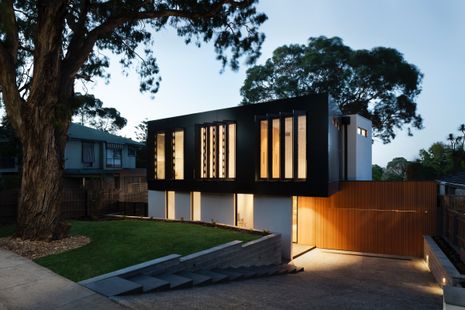|
|
|
|
|
Four In Five Suburbs Increase In Value
Property values increased in more than 80% of Australia’s house and unit suburbs in the past three months.
Analysis by CoreLogic shows 3714 house and unit suburbs have higher median values than three months ago with only 792 suburbs experiencing a drop.
House markets (83.1% had value increases) performed slightly better than unit markets (80.6%).
Perth had only one house market where values dropped, followed by Adelaide (3), Brisbane (4), Darwin (9), Hobart (18), Canberra (24), Sydney (48) and Melbourne (72).
In regional Australia, Queensland performed the best with values dropping in only 13% of house markets, followed by Western Australia (23%), New South Wales (25%), South Australia (37%), Victoria (59%), Tasmania (60%) and Northern Territory (83%).
CoreLogic Head of Research Eliza Owen says that data broadly reflects continued growth in the Australian housing market, despite high interest rates and weakening economic conditions.
“It’s often noted that Australia is not ‘one housing market’ and we’re currently seeing increased diversity in capital city market performance," she says.
|
|
|
|
|
|
|
|
Where Buyer Demand Is The Highest
New data shows the suburbs where demand for property has increased the most in the past year.
PropTrack measured serious enquiries per online listings, such as emailing an enquiry, calling the agent or downloading documents, to determine the most in-demand locations.
Sydney and Brisbane dominate the list.
PropTrack senior economist Paul Ryan says potential buyers are focusing on locations that offer space or affordability or both.
“Affordability has been very stretched by higher interest rates, so people are altering what they’re looking for and searching for properties a little further out,” Ryan says.
As such many of the high-demand suburbs are on the fringes of capital cities.
The suburb with the most demand is Holgate on the NSW Central Coast, followed by Chandler in Brisbane.
In the ACT the most in-demand suburb for houses was Holt, in the NT it was Larrakeyah, Mylor in South Australia, Acton Park in Tasmania, Pakenham Upper in Victoria and Mirrabooka in Western Australia.
|
|
|
|
|
|
|
|
How Our Luxury Markets Compare
Australia’s luxury property market values are continuing to rise according to the latest Knight Frank Prime Global Cities Index.
The report tracks the movement of 46 luxury residential markets worldwide and reveals that in Australia, Sydney’s luxury property prices rose by 4.2% in the past 12 months, while the Gold Coast rose by 3.9% and Perth by 3.8%.
Sydney was ranked eighth in the world for growth in the past 12 months, followed by the Gold Coast (11), Perth (12), Brisbane (15) and Melbourne (26).
Manila had the highest growth in the world coming in at the top spot with an increase of 21.2% in the past 12 months.
The report says that Australian markets all managed to deliver positive annual growth which was buoyed by strong demand and low supply, although drops in values in the top end of the Perth and Melbourne markets in the past quarter meant those markets had limited growth in the current cycle.
|
|
|
|
|
|
|
|
Where Prices Could Boom in 2024
Houses prices could boom in some capital cities in 2024, if population growth does not slow down, according to the 2024 SQM Research Boom and Bust report.
SQM managing director Louis Christopher’s “base case" forecast is for average capital city prices to change between -1% to +3% in 2024.
“The cities of Perth and Brisbane are the only cities
expected to record price rises with each respective market driven by a tailwind of a recovering Chinese economy which is anticipated to see strong demand for base commodities such as iron ore,” Christopher says.
He predicts Brisbane house prices will rise by 4% to 8% in a base case scenario, but if population growth does not slow and inflation blows out again it could be between 7% and 11%.
Perth is tipped to rise between 5% and 9%, Adelaide and Darwin will remain steady, Sydney will drop by up to 4%, Melbourne to fall by up to 3% and Canberra will fall between 4% to 8%. |
|
|
|
|
|
|
|
Regional House Prices Still Rising
While the price growth in regional Australia’s property markets slowed earlier this year, new analysis shows it is starting to catch up again.
Prices across the combined capital cities increased by 5.95% since December 2022, while at the same time, the combined regional centres increased by 2.43%.
PropTrack senior economist, Eleanor Creagh, says price growth had slowed in regional areas because of an increase in listings. Stock on market increased and demand eased, which led to price growth slowing.
The number of properties listed for sale had normalised now in parts of regional NSW, Victoria, Tasmania and the Northern Territory, according to Creagh.
It remains tight in regional Queensland, South Australia and Western Australia.
Total listings in regional NSW increased by 4.4% in September to reach the highest level in three years, and listings in regional Victoria and Tasmania were 37.6% and 30.7% year-on-year respectively.
Despite this, the pace of price growth in regional markets increased in October by 0.32%. |
|
|
|
|
|
|
|
|
| Quote Of The Week
“Affordability has been very stretched by higher interest rates, so people are altering what they’re looking for and searching for properties a little further out.”
PropTrack senior economist Paul Ryan
|
|
|
|
|
|
|
|
|
|










